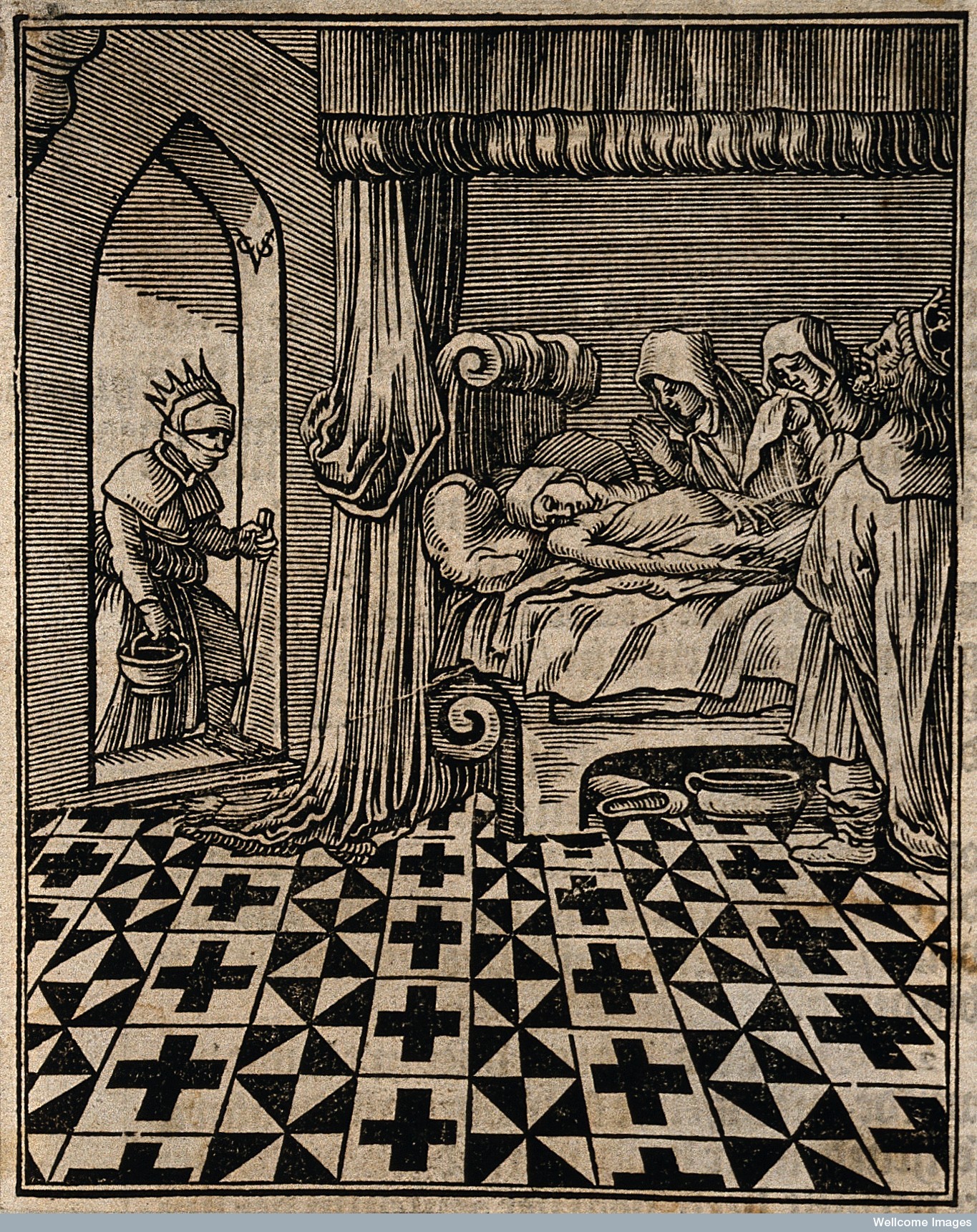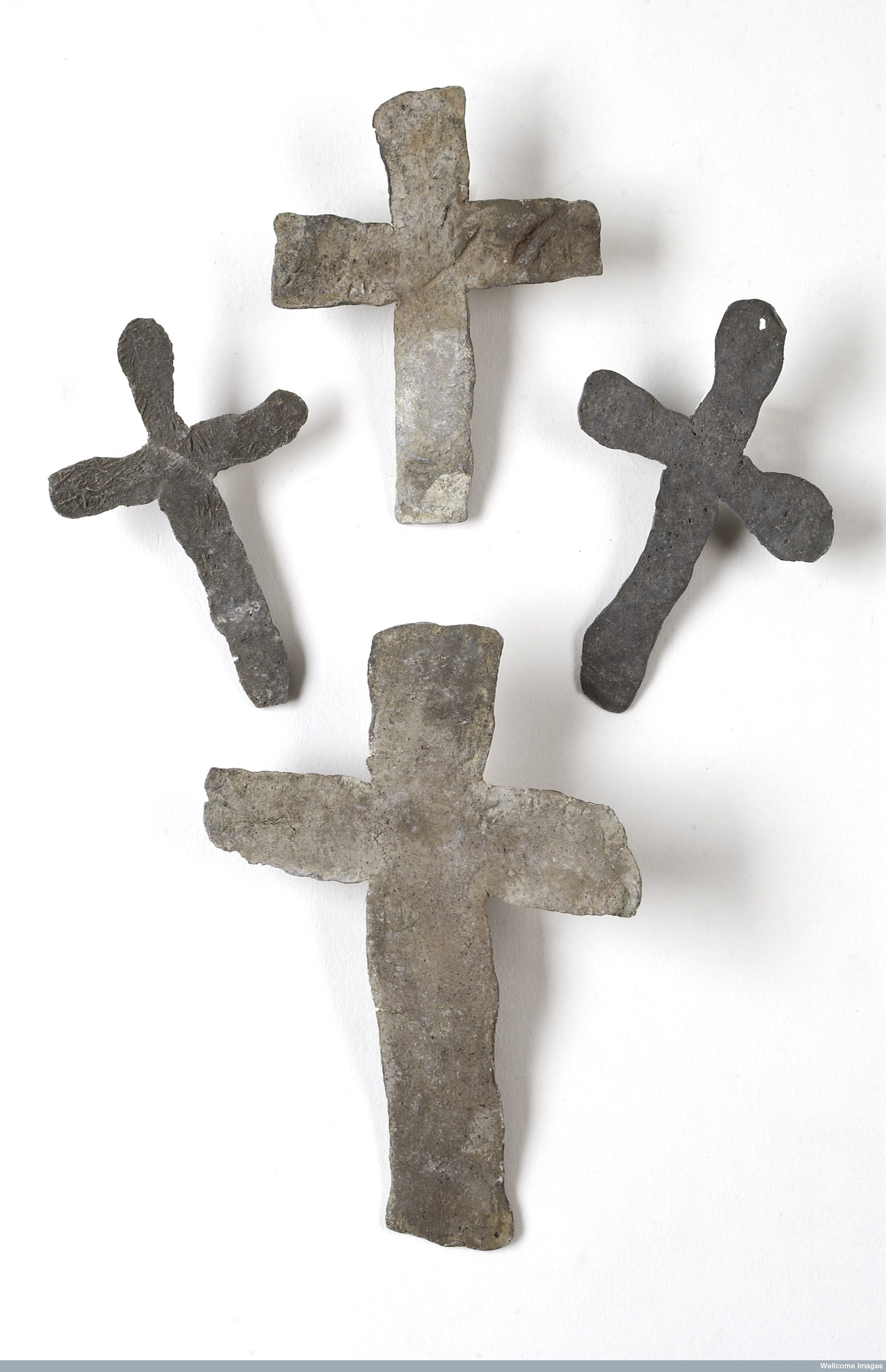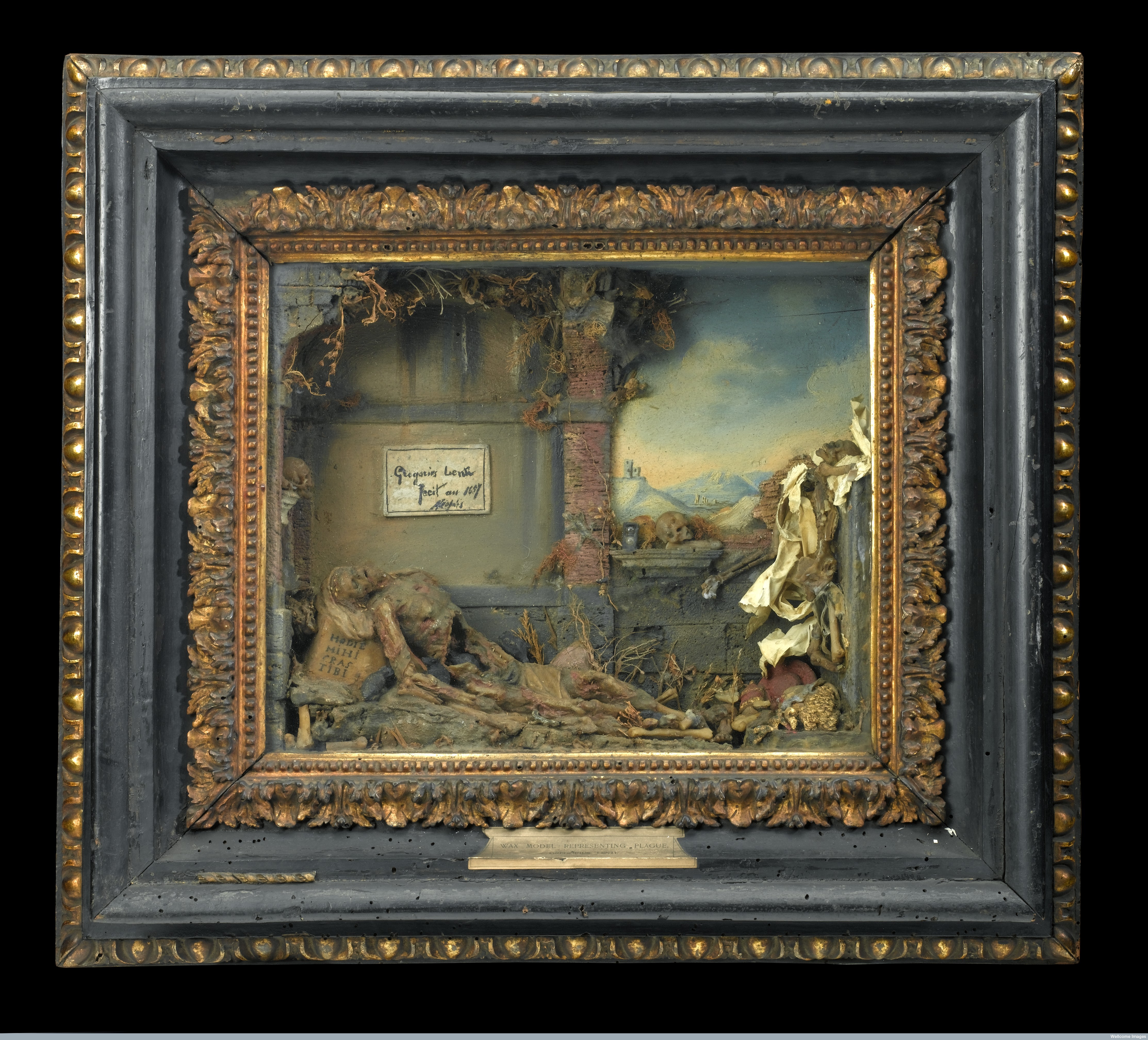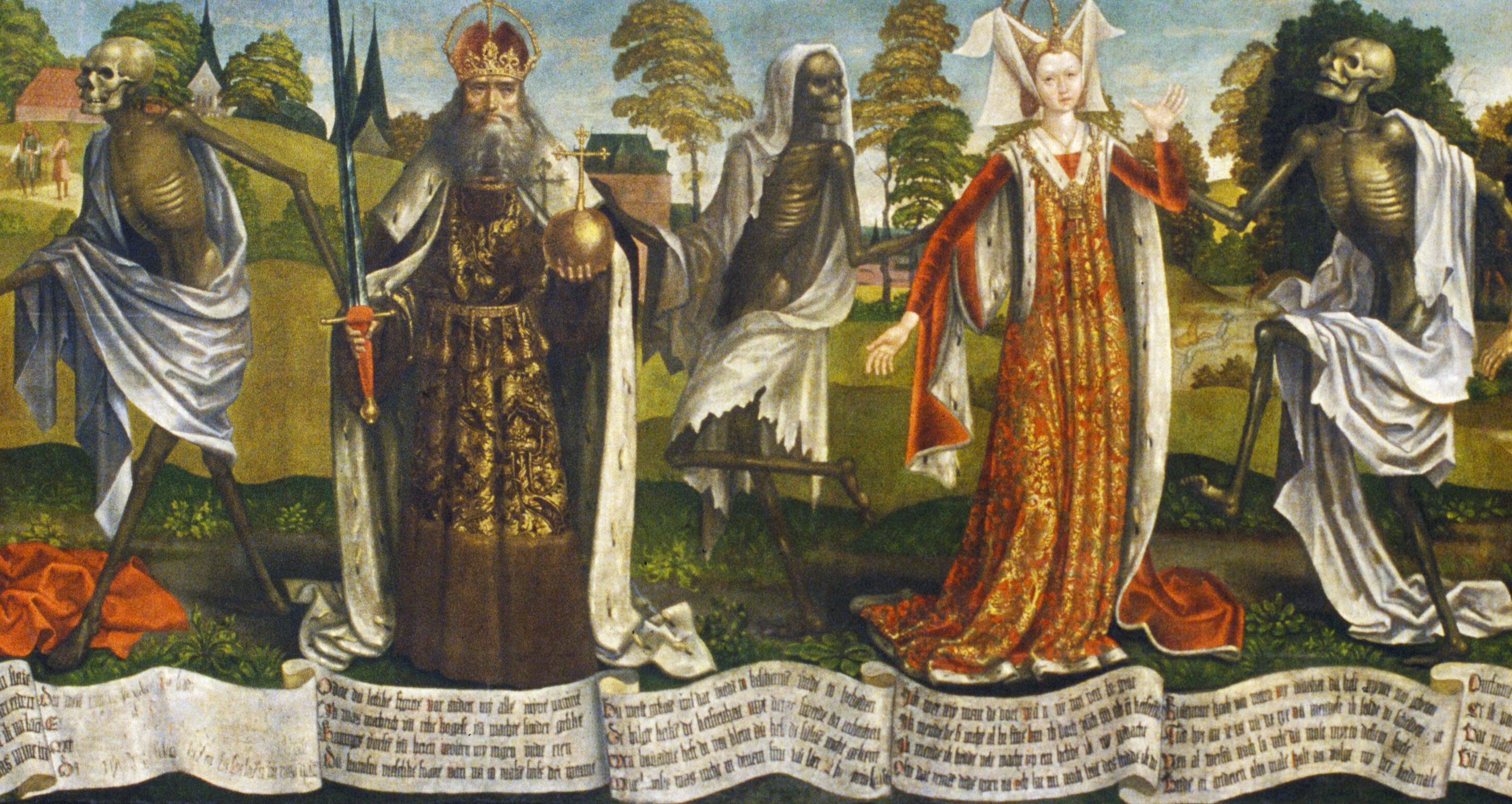“He had come like a thief in the night. And one by one dropped the revellers in the blood-bedewed halls of their revel, and died each in the despairing posture of his fall. And the life of the ebony clock went out with that of the last of the gay. And the flames of the tripods expired. And Darkness and Decay and the Red Death held illimitable dominion over all.”
-‘The Masque of the Red Death’, Edgar Allan Poe (1842)
Europe in the later Middle Ages and Early Modern period was not a healthy place. In particular, for those living in the crowded, unhygienic towns and cities, epidemic diseases were a fact of life. Typhoid fever, typhus, dysentery, malaria or ague, measles and other afflictions could snatch away lives in alarming numbers, but most feared of all were the plague and, later, smallpox. These diseases had no respect for rank; a king was as susceptible as a commoner, but at least – you might think – royalty could afford to take countermeasures. Even in the 13th century, the connection between dirt and disease was understood, although it was described in terms of ‘foul airs’ rather than bacteria and viruses, so a clean house was a healthy house.
The rich travelled to other residences while servants scrubbed and refreshed the place they had left. For the poor, this was not an option when disease appeared in the vicinity. However, did European royalty flee from the threat of disease at the first opportunity?
Take the case of bubonic plague, rife across Europe from the 14th to the 17th century under its various pseudonyms of the Pestilence, the Great Mortality, the Great Plague or the Black Death. Although many deaths were assumed to be caused by plague, after seven centuries it is sometimes hard to be certain.
Contemporary sources rarely record where individual lords and their families were on a particular date, or whether their movements coincided with the arrival of the plague. However, we do have an itinerary for Edward III, King of England during the first plague epidemic of 1348-49. England had been at war with France since 1337, but the conflict paused as the plague swept across Europe, beginning in Sicily in October 1347, possibly arriving by sea from the Crimea. King Edward and his army returned to England, as yet untouched by the disease, to wait upon events.
By June 1348, the plague was in Paris, but the fear of it travelled more swiftly and England watched and prayed. Inevitably, the disease did arrive in Dorset at Melcombe Regis, coming by sea from Bordeaux on the west coast of France. On 23 June, it claimed its first English victims. King Edward was at Windsor and his itinerary shows that he travelled around south-eastern England as he usually did, but devastating news arrived from Bordeaux. On 1 July, Edward’s 12-year-old daughter, Joan, en route to Spain to marry King Pedro of Castile, had become the plague’s first royal victim, along with her diplomatic escort, Sir Robert Bourchier.

The first cases of plague among the 100,000 population of London occurred in early October, with John de Foxton, the deputy coroner, among them. Despite this, the king was frequently in the capital and at nearby Westminster (which had remained plague-free) during October, November and December. Despite his grief at his daughter’s death, far from isolating himself in a country retreat, Edward held splendid tournaments at Windsor, Reading, Eltham, Canterbury, Bury and Lichfield, inviting all the nobility. It seems he was one of the ‘eat, drink and be merry…’ faction, who saw little point in excessive religious fervour and abstemious living in the hope that God would see fit to keep them safe. After all, churchmen were rapidly succumbing. When the archbishop of Canterbury died in August 1348 – not from the plague – the king wanted his chancellor, John Ufford, to replace him.
Duly appointed, the new archbishop continued his work as chancellor at Westminster, but in the spring of 1349 the seat of government – as yet unscathed despite its proximity to plague-ridden London – had its first casualties among the law clerks. The king’s physician who attended them soon fell sick and died, followed on 20 May by the chancellor before he was even consecrated as archbishop. This time, the king retired to Woodstock in Oxfordshire and the law courts were closed from 15 June to 14 July, but Edward returned to Westminster in August. During that month, he welcomed Ufford’s replacement as Archbishop of Canterbury, Thomas Bradwardine, at Eltham Palace in Kent. Bradwardine had just returned from Avignon in France, where the pope had confirmed him in office and swiftly moved on to London. But during the short journey from Eltham, the new archbishop also became ill. Four days later he died, having contracted the plague in France.
Across Europe, other people of rank fell victim: Alphoso XI of Castile may have been one, dying during the siege of Gibraltar in 1350. Pedro IV of Aragon lost his wife, his daughter and a niece within six months, most likely due to the plague. In Avignon, Pope Clement VI took the precaution of being surrounded by smoky torches to block the bad plague-carrying air and survived. Venice took stringent quarantine and health measures, isolating incoming ships on a separate island.
The precautions were partly successful. The Visconti, lords of Milan, took extreme steps to ward off the plague and with more success. They too introduced quarantine, sealing off the city, but still its arrival caused panic among the people, not helped by an earthquake during the epidemic. Luchino Visconti took the ultimate measure, ordering city officials to seal up houses in which there were cases of the disease, isolating the healthy along with the sick. Despite his efforts to ensure his own good health, Luchino, having recently wed his third wife, Isabella, in 1349, discovered she was unfaithful and devised a horrible punishment for her. But a few days later he was dead – of poison.
As the plague in France struck down at least a third of the population, royalty was not immune. Queen Jeanne la Boiteuse (Joan the Lame), daughter of the duke of Burgundy, was the first wife of King Philip VI of France. With her husband frequently away on campaigns, she proved herself to be a capable regent, ‘the brains behind the throne and the real ruler of France’. However, she succumbed to the epidemic in December 1349. She was buried in Saint Denis, as befitted a Queen of France.

Credit: Wellcome Library, London.
By 1350, the first epidemic of plague was abating but the relief was temporary because the disease was now endemic in Europe – always present – with localised epidemics every few years, some more devastating than others. In England, the next terrible outbreak occurred in 1361 and this time the nobility were not so fortunate. Henry of Grosmont, Duke of Lancaster, was of royal blood but nothing could save him when plague came knocking. He died at his castle in Leicester on 23 March and his wife, Isabella Beaumont, fell victim before the end of the year. Grosmont had two daughters, Maud and Blanche. Maud married William V, Count of Holland, Zeeland and Hainault, but she died in April 1362, possibly from the plague. Her younger sister, Blanche, was the first wife of John of Gaunt, a son of King Edward III, and one source says she too fell victim and died at Tutbury Castle, Staffordshire, on 12 September 1368 while her husband was overseas. However, since she died within a few days of giving birth to a child that also died, perhaps post-natal complications were a more likely cause.
What is certain is that one of John and Blanche’s daughters, Philippa, who married the King of Portugal, did contract and die of the dreaded disease during a later outbreak in 1415, aged 53. More than one source suggests that in 1394, Queen Anne of Bohemia, wife of Richard II of England, may have died of the plague at the palace of Sheen, now Richmond in West London. King Richard was overwhelmed by grief and ordered the palace to be destroyed. Whatever caused Anne’s demise, all the nobles attended her burial so they were not affected nor worried about contagion. The year 1394 is not recorded as a year of a plague epidemic in England, so there is no certainty Anne was a victim.
Few years, if any, in England and Europe were entirely free of plague until the later 17th century. In 1592, there was a serious outbreak in London, such that Queen Elizabeth I spent the summer on progress around her kingdom, avoiding the city. However, since she frequently went on such tours, bestowing her presence on wealthy nobles and living at their expense, it is difficult to say whether the plague was her main reason for leaving the south-east of England. Records show the queen stayed at Eton, Reading and Oxford on her way to Sudeley Castle in Gloucestershire. There she was entertained by Lord Chandos with an elaborate party that continued for days – all paid for by her host, of course. By the time she returned to the London area, the epidemic had abated.

The plague returned to London with a vengeance in 1665. The first cases occurred in the parish of St Giles-in-the-Fields, outside the city walls, in the early spring. The death rate rose swiftly and the infection spread so rapidly that in April King Charles II prorogued parliament so that the lords and the MPs could flee the city.
Charles retired to the safety of Salisbury, staying at Malmesbury House with the wealthy Harris family. The house was magnificent but the king did not like Salisbury – perhaps it was too far removed from the centre of affairs. He was at Hampton Court in July but that was not sufficiently far enough from London, so he moved to Oxford in September, always a favoured royalist city. The courts of law left Westminster to join him there and the meeting of parliament, postponed in April, took place in Oxford in October.
While lords, doctors, lawyers and well-to-do merchants left London for their country estates, hoping to avoid the contagion, the lord mayor and aldermen stayed to keep law and order and to do what they might to stop the spread of the disease. The poor also remained in the city where watchmen locked and kept a guard on infected houses, while parishioners and neighbours left food on the doorstep for those living within. Searchers collected the dead and carried them by night to the plague pits for burial. The diarist Samuel Pepys – who did not flee, although he did send his wife to the village of Woolwich – described London’s streets as being deserted, grass growing in the roads and the difficulty in buying food when so many brewers and bakers were dead, the shops and markets closed.
The event that ‘saved’ London from plague was the equally catastrophic Great Fire of 1666. The flames eradicated the plague rats, their fleas and cleaned up the filth with enough sufficiency to make this the last epidemic of plague in England. There were isolated cases into the 20th century but these were derived from ships from the Orient and India, brought into ports and troubled the health authorities but not royalty.
Toni Mount is the author of Medieval Medicine: Its Mysteries and Science. For more of life in Medieval and Early Modern Europe, subscribe to History of Royals and get every issue delivered straight to your drawbridge.
Sources:
- B Gummer, The Scourging Angel: The Black Death In The British Isles, Vintage Books 2010
- C Brewer, The Death Of Kings: A Medical History Of The Kings And Queens Of England, Abson Books 2000
- I & J Glynn, The Life And Death Of Smallpox, Profile Books 2004
- T Mount, Medieval Medicine: Its Mysteries And Science, Amberley 2016
